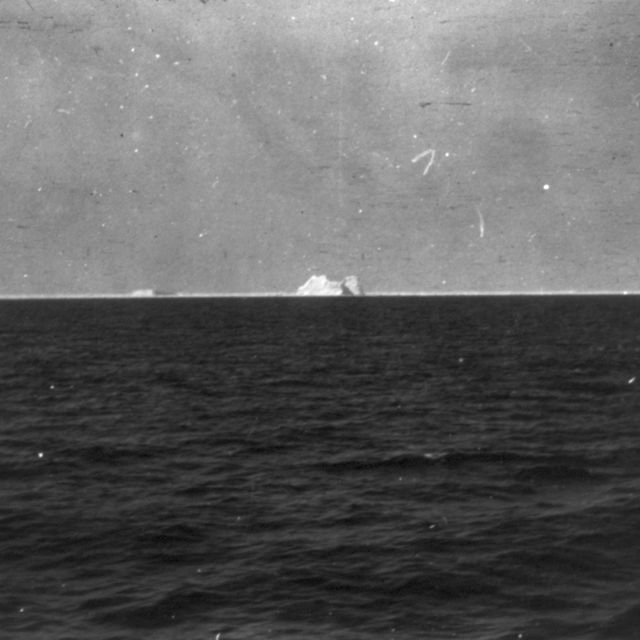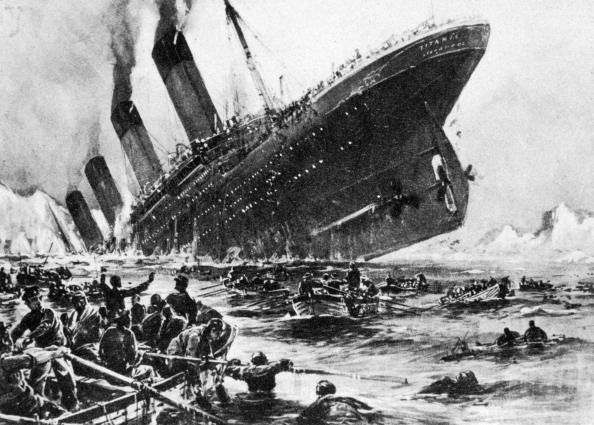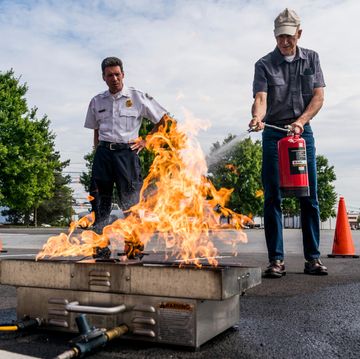This story is a collaboration with Biography.com.
More than a century after the sinking of the RMS Titanic, the identity of the iceberg that actually brought the mighty ship down is still unconfirmed. We’ve long scrutinized two photographs of separate icebergs that possibly sank the Titanic, but now, a newly discovered picture that’s up for auction shows a third frozen chunk—casting new doubt over the true culprit behind the legendary disaster.
The 5-inch by 3-inch black-and-white photograph—see it here—mounted on cardboard and mistakenly labeled “Titantic,” captures a potential suspect in the ship’s infamous sinking. Taken by John Snow Jr., a Nova Scotian undertaker, while en route to the North Atlantic wreckage site aboard the C.S. MacKay-Bennett on April 16, 1912—just two days after the Titanic’s fateful encounter with an iceberg—this image adds another piece to the historical puzzle.
Snow, who was tasked with aiding in the recovery of victims, ultimately retrieved 306 bodies from the icy waters, including John Jacob Astor IV and Isidor Straus.
The C.S. MacKay-Bennett couldn’t handle all 306 bodies, so Snow’s firm embalmed 100 first-class passengers for return in coffins from Nova Scotia, and wrapped second-class passengers in canvas. Tragically, 116 third-class passengers and crew members were buried at sea.
“Nobody can say for sure” that the iceberg seen in the newly uncovered photo was the one that sank the Titanic, auctioneer Andrew Aldridge told The Daily Mail. But the Mackay-Bennett was one of the first ships to arrive at the wreckage site after the rescue ship Carpathia, which lends considerable weight to the possibility—especially since “the undertaker on board decided to take a photo of this iceberg,” Aldridge said.
The prevailing theory suggests the Titanic’s nemesis was an iceberg marked with red paint, a telltale sign a ship had recently struck it. The emergence of a third iceberg photo adds to the intrigue. “He must have had his reasons for taking a photo of this iceberg,” Aldridge said. “He captioned it Titantic and mounted it for posterity.”
The photo, which is slated for auction on April 27 and is expected to fetch between $5,000 and $8,500, was in the Snow family until a collector acquired it in the early 1990s. That collector has brought it to auction.
Regardless of which iceberg was responsible for the Titanic’s sinking, it still took decades for people—including those on board the ship—to fully understand what really happened on the night of April 14, 1912.
The trouble for the White Star Line-owned Titanic started that morning, according to Biography. The ship received a warning about ice in its path from the Caronia, and got another message about dangerous ice from the Baltic in the early afternoon. While Captain Edward Smith relayed the information to the chairman of the White Star Line, no one took action that day.
Later in the evening, after 7 p.m., the Titanic’s crew overheard a third ice warning, this time from the Californian alerting another ship in its fleet. The crew disregarded a fourth advisory from the Mesaba, and the telegraph operators didn’t record a complete warning that the Californian directly transmitted to the Titanic.
As the warnings piled up unheeded, around 11:40 p.m., a crew member spotted an iceberg in the Titanic’s path, but it was too late to move. The opportunity to decelerate or divert southward to evade the icebergs had already slipped away. The Titanic collided with the iceberg, sustaining damage to its forward section. The iceberg tore several holes in the ship’s side, and seawater rapidly began to pour in. Shortly after the collision, Captain Smith rushed to the bridge to evaluate the crisis and discovered that the ship was sinking.
The first distress call went out after midnight.
The Titanic didn’t have enough lifeboats to carry all its passengers to safety. Roughly 20 minutes past 2 a.m. on the morning of April 15, the Titanic plunged into the depths of the North Atlantic.
Biography writes that initially, surviving passengers reported watching from the water as the Titanic split apart before sinking. But for 73 years, those survivors’ claims were dismissed, and the conventional wisdom was that the Titanic sank in one piece.
“We rode away, and I didn’t close my eyes at all. I saw that ship sink, and I saw that ship break in half,” said Eva Hart, a 7-year-old Titanic survivor. “For 70 years, people have argued with me about that, but now at last it has been proven beyond all doubt that she did break in half. I know it did, I saw her.”
Biography continues:
It wasn’t until the Titanic’s wreckage was discovered in 1985 that it was definitively proven that the ship had indeed split. Until that time, the survivors were told they misunderstood or incorrectly remembered what they had seen, largely thanks to testimony from employees of the White Star Line shipping company in the immediate months after the Titanic sank on April 15, 1912.
The true events of that tragic night have remained shrouded in doubt and speculation. And now, with the revelation of a third photograph potentially capturing the iceberg responsible for the sinking of the Titanic, we edge closer to piecing together the ship’s last moments.
Tim Newcomb is a journalist based in the Pacific Northwest. He covers stadiums, sneakers, gear, infrastructure, and more for a variety of publications, including Popular Mechanics. His favorite interviews have included sit-downs with Roger Federer in Switzerland, Kobe Bryant in Los Angeles, and Tinker Hatfield in Portland.














